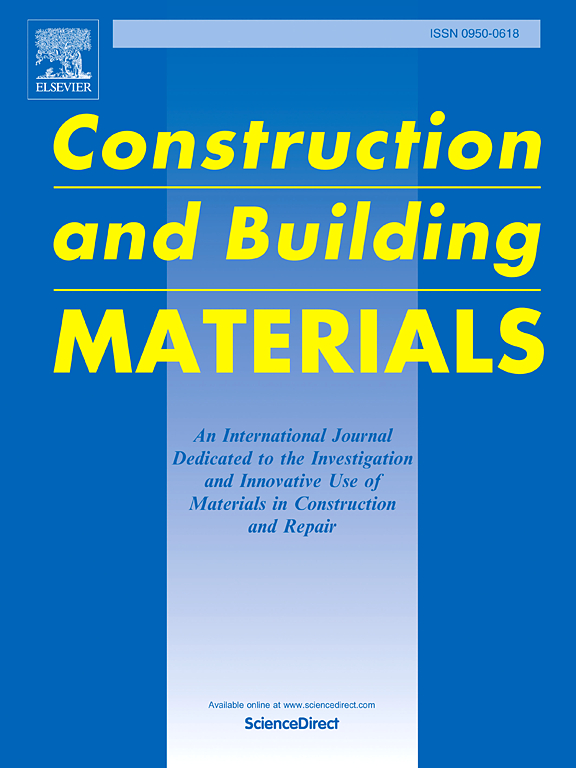Elaborately-designed high-service performance carbon refractory brick through refreshing the pore structure
IF 7.4
1区 工程技术
Q1 CONSTRUCTION & BUILDING TECHNOLOGY
引用次数: 0
Abstract
In this study, the microporous structure of carbon refractory bricks was enhanced through the incorporation of innovative graphitic-silica microspheres with high chemical reactivity. These microspheres were synthesized via hydrothermal carbonization and catalytic graphitization, using silica sol and sucrose wastewater as raw materials. The elemental distribution and morphology of the products obtained through hydrothermal carbonization and catalytic graphitization were analyzed. Building on these findings, the effects of varying graphitic-silica microsphere contents on the phase composition, microstructure, physical properties, molten iron corrosion resistance, and high-temperature carbon dioxide corrosion resistance of the samples were investigated. Compared to samples without graphitic-silica microspheres, those containing the microspheres exhibited in-situ formation of SiC whiskers within the pores, creating a network structure that effectively subdivided the macropores and increased microporosity. Furthermore, these samples demonstrated significant improvements in density, compressive strength, thermal conductivity, and resistance to both molten iron corrosion and high-temperature carbon dioxide corrosion. As the microsphere content increased from 2 wt% to 8 wt%, the sample properties initially improved and then declined. At the optimal microsphere content of 4 wt%, the samples achieved a porosity of 7.5 %, a density of 1.78 g/cm³ , a compressive strength of 69.4 MPa, a thermal conductivity of 11.53 W/m·K, and excellent resistance to molten iron and carbon dioxide corrosion. This study offers an effective approach to improving the performance of carbon refractory bricks.
求助全文
约1分钟内获得全文
求助全文
来源期刊

Construction and Building Materials
工程技术-材料科学:综合
CiteScore
13.80
自引率
21.60%
发文量
3632
审稿时长
82 days
期刊介绍:
Construction and Building Materials offers an international platform for sharing innovative and original research and development in the realm of construction and building materials, along with their practical applications in new projects and repair practices. The journal publishes a diverse array of pioneering research and application papers, detailing laboratory investigations and, to a limited extent, numerical analyses or reports on full-scale projects. Multi-part papers are discouraged.
Additionally, Construction and Building Materials features comprehensive case studies and insightful review articles that contribute to new insights in the field. Our focus is on papers related to construction materials, excluding those on structural engineering, geotechnics, and unbound highway layers. Covered materials and technologies encompass cement, concrete reinforcement, bricks and mortars, additives, corrosion technology, ceramics, timber, steel, polymers, glass fibers, recycled materials, bamboo, rammed earth, non-conventional building materials, bituminous materials, and applications in railway materials.
 求助内容:
求助内容: 应助结果提醒方式:
应助结果提醒方式:


